Japanese clans
This articleneeds additional citations forverification.(April 2018) |
This is a list ofJapanese clans.The old clans (gōzoku) mentioned in theNihon ShokiandKojikilost their political power before theHeian period,during which new aristocracies and families,kuge,emerged in their place. After the Heian period, thesamuraiwarrior clans gradually increased in importance and power until they came to dominate the country after the founding of the firstshogunate.
Ancient clan names
[edit]There are ancient-eraclannames calledUji-na(Thị danh)orHonsei(Bổn tính).
Imperial Clan
[edit]
- The Imperial clan– descended fromAmaterasu.Itsemperorsand clan members have no clan name but had been called "the imperial house" (Hoàng thất) if necessary.
Four noble clans
[edit]Gempeitōkitsu(Nguyên bình đằng quất),4 noble clans of Japan:
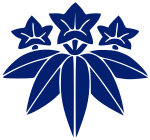
- Minamoto clan(Nguyên thị) – also known as Genji ( nguyên thị ) or Genke ( nguyên gia );21cadet branchesofImperial House of Japan.
- Daigo Genji (Thể hồ nguyên thị) – descended from 60themperor Daigo.
- Go-Daigo Genji (Hậu thể hồ nguyên thị) – descended from 96themperor Go-Daigo.
- Go-Fukakusa Genji (Hậu thâm thảo nguyên thị) – descended from 89themperor Go-Fukakusa.
- Go-Nijō Genji (Hậu nhị điều nguyên thị) – descended from 94themperor Go-Nijō.
- Go-Saga Genji (Hậu tha nga nguyên thị) – descended from 88themperor Go-Saga.
- Go-Sanjō Genji (Hậu tam điều nguyên thị) – descended from 71stemperor Go-Sanjō.
- Go-Shirakawa Genji (Hậu bạch hà nguyên thị) – descended from 77themperor Go-Shirakawa.
- Juntoku Genji (Thuận đức nguyên thị) – descended from 84themperor Juntoku.
- Kameyama Genji (Quy sơn nguyên thị) – descended from 90themperor Kameyama.
- Kazan Genji (Hoa sơn nguyên thị) – descended from 65themperor Kazan.
- Kōkō Genji (Quang hiếu nguyên thị) – descended from 58themperor Kōkō.
- Montoku Genji (Văn đức nguyên thị) – descended from 55themperor Montoku.
- Murakami Genji(Thôn thượng nguyên thị) – descended from 62ndemperor Murakami.
- Ninmyō Genji (Nhân minh nguyên thị) – descended from 54themperor Ninmyō.
- Ōgimachi Genji (Chính thân đinh nguyên thị) – descended from 106themperor Ōgimachi.
- Reizei Genji (Lãnh tuyền nguyên thị) – descended from 63rdemperor Reizei.
- Saga Genji (Tha nga nguyên thị) – descended from 52ndemperor Saga.
- Sanjō Genji (Tam điều nguyên thị) – descended from 67themperor Sanjō.
- Seiwa Genji(Thanh hòa nguyên thị) – descended from 56themperor Seiwa;origin of many samurai clans.
- Kawachi Genji(Hà nội nguyên thị) – descended fromMinamoto no Yorinobu;origin of Hitachi Genji (Thường lục nguyên thị), Ishikawa Genji (Thạch xuyên nguyên thị); and Kai Genji (Giáp phỉ nguyên thị); famous for 3Kamakura shōguns.
- Settsu Genji (Nhiếp tân nguyên thị) – descended fromMinamoto no Yorimitsu;origin of Tada Genji (Đa điền nguyên thị), Mino Genji (Mỹ nùng nguyên thị) and Shinano Genji (Tín nùng nguyên thị).
- Yamato Genji (Đại hòa nguyên thị) – descended from Minamoto no Yorichika.
- Uda Genji(Vũ đa nguyên thị) – descended from 59themperor Uda;origin of Ōmi Genji (Cận giang nguyên thị).
- Yōzei Genji (Dương thành nguyên thị) – descended from 57themperor Yōzei.
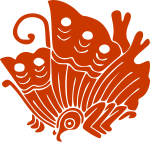
- Taira clan(Bình thị) – also known as Heishi ( bình thị ) or Heike ( bình gia ); 4cadet branchesofImperial House of Japan.
- Kanmu Heishi (Hoàn võ bình thị) – descended from 50themperor Kanmu;famous forTaira no Masakado.
- Bandō 8 Heishi (Bản đông bát bình thị) – descended fromTaira no Yoshifumi.
- Ise Heishi (Y thế bình thị) – descended from Taira no Korehira; famous forTaira no Kiyomori.
- Kōkō Heishi (Quang hiếu bình thị) – descended from 58themperor Kōkō.
- Montoku Heishi (Văn đức bình thị) – descended from 55themperor Montoku.
- Ninmyō Heishi (Nhân minh bình thị) – descended from 54themperor Ninmyō.
- Kanmu Heishi (Hoàn võ bình thị) – descended from 50themperor Kanmu;famous forTaira no Masakado.
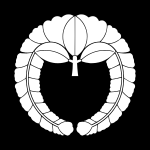
- Fujiwara clan(Đằng nguyên thị) – descended fromFujiwara no Kamatari,and through him,Ame-no-Koyane.
- 4 families of Fujiwara (Đằng nguyên tứ gia) – descended from 4 sons ofFujiwara no Fuhito.
- Fujiwara Hokke(Đằng nguyên bắc gia) – northern family; descended fromFujiwara no Fusasaki.
- Fujiwara Kyōke (Đằng nguyên kinh gia) – descended fromFujiwara no Maro.
- Fujiwara Nanke (Đằng nguyên nam gia) – southern family; descended fromFujiwara no Muchimaro.
- Fujiwara Shikike (Đằng nguyên thức gia) – descended fromFujiwara no Umakai.
- Northern Fujiwara clan(Áo châu đằng nguyên thị) – also known as Ōshū Fujiwara clan; descended fromFujiwara no Hidesato.
- 4 families of Fujiwara (Đằng nguyên tứ gia) – descended from 4 sons ofFujiwara no Fuhito.

- Tachibana clan(Quất thị) – descended from Prince Naniwa-Ō, son ofPrince Shōtoku(572–621), 2nd son ofEmperor Yōmei;no direct relation to the feudalTachibana clan(Lập hoa thị)
Noble clans
[edit]- Abe clan(A bộ thị / an bội thị) – descended from Prince Ōhiko, son ofEmperor Kōgen;no direct relation to the Abe clan of Ōshū (An bội thị).
- Abe clan of Ōshū(An bội thị) – descended from Abihiko (disputed); no direct relation to theKōgen-descent Abe clan(A bộ thị), famous forAbe no HirafuandAbe no Yoritoki.
- Aya clan of Sanuki province– According to theKojikidescended from Prince Takekaiko, grandson ofEmperor Keikō.
- Hashiji clan(Thổ sư thị) – descended from thekamiNomi no Sukune(legendary).
- Imube clan(Kỵ bộ thị) – descended from thekamiAme no Futotama no Mikoto(legendary), and his descendant Ame no Tomi no Mikoto companion in arms ofEmperor Jimmu.
- Ki clan(Kỷ thị) – descended fromEmperor Kōgenby the MinisterTakenouchi no Sukune;famous forKi no Tsurayuki.
- Kusakabe clan(Nhật hạ bộ thị) – descended from 9thEmperor Kaika,or 36thEmperor Kōtoku(disputed).
- Mononobe clan(Vật bộ thị) – descended from thekamiNigihayahi no Mikoto (legendary), a descendant of the elder brother ofNinigi no Mikoto(legendary), great-grandfather ofEmperor Jimmu;famous forMononobe no Moriya.
- Nakatomi clan(Trung thần thị) – descended from thekamiAme no Koyaneno Mikoto (legendary), and his descendant Ame no Taneko no Mikoto companion in arms ofEmperor Jimmu;origin ofFujiwara clan.
- Ō clan(Đa thị) – descended from Prince Kamuyaimimi no Mikoto, son ofEmperor Jimmu;famous forŌ no Yasumaro.
- Ochi clan(Việt trí thị) – descended fromMononobe clan.
- Ōe clan(Đại giang thị) – descended from Hashiji clan.
- Ōtomo clan(Đại bạn thị) – descended from Michi-omi no Mikoto companion in arms ofEmperor Jimmu;no direct relation to the immigrant Ōtomo clan (Đại hữu thị) or feudal Ōtomo clan (Đại hữu thị); famous forŌtomo no Yakamochi.
- Ozutsuki clan(Đại đồng mộc thị)
- Soga clan(Tô ngã thị) – descended fromEmperor Kōgen,by the MinisterTakenouchi no Sukune;famous forSoga no Umako.
- Sugawara clan(Gian nguyên thị) – descended from Hashiji clan; famous forSugawara no Michizane
- Takahashi clan(Cao kiều thị)
Aristocratic family names
[edit]From the late ancient era onward, the family name (Myōji/ miêu tự or danh tự ) had been commonly used by samurai to denote their family line instead of the name of the ancient clan that the family line belongs to (uji-na/ thị danh or honsei/ bổn tính ), which was used only in the official records in the Imperial court.Kugefamilies also had used their family name (Kamei/ gia danh ) for the same purpose. Each of samurai families is called "[family name] clan ( thị )" as follows and they must not be confused with ancient clan names. The list below is a list of various aristocratic families whose families served asShugo,Shugodai,Jitō,andDaimyo
- Abe clan of Mikawa(A bộ thị) – descended fromEmperor Kōgenand the ancientAbe clan(A bộ thị); no direct relation to the Abe clan of Ōshū (An bội thị).

- Adachi clan(An đạt thị) – descended fromFujiwara clan.
- Akamatsu clan(Xích tùng thị) – descended fromMurakami Genji.
- Akechi clan(Minh trí thị) – cadet branch ofToki clanwho descended fromSeiwa Genji;famous forAkechi Mitsuhide.
- Akita clan(Thu điền thị) – descended from Abe clan of Ōshū.
- Akiyama clan(Thu sơn thị) – cadet branch ofTakeda clanwho descended fromSeiwa Genji.

- Akizuki clan(Thu nguyệt thị) – descended from Prince Achi no Omi of the ChineseHan dynasty.
- Amago clan(Ni tử thị) – cadet branch ofSasaki clanwho descended fromUda Genji.
- Amakusa clan (Thiên thảo thị) – descended from Ōkura clan.
- Anayama clan (Huyệt sơn thị) – cadet branch ofTakeda clanwho descended fromSeiwa Genji.
- Andō clan– descended from Abe clan of Ōshū, byAbe no Hirafu.
- Asakura clan(Triều thương thị) – descended fromPrince Kusakabeson ofEmperor Tenmu.
- Asano clan(Thiển dã thị) – cadet branch ofToki clanwho descended fromSeiwa Genji.
- Ashikaga clan(Túc lợi thị) – descended fromSeiwa Genji;famous forAshikaga shogunate;no direct relation to theFujiwara-descent Ashikaga clan.

Mon of theAshikaga clan - Ashikaga clan (Fujiwara)(Túc lợi thị) – descended fromFujiwara Hokke;no direct relation to theGenji-descent Ashikaga clan.
- Ashina clan(Lô danh thị) – cadet branch ofMiura clanwho descended from Kanmu Heishi.
- Aso clan(A tô thị) – descended fromEmperor Jimmuby theŌ clan.
- Asō clan (Ma sinh thị) – cadet branch of Utsunomiya clan who descended fromFujiwara Hokke;famous forTarō Asō.
- Atagi clan (An trạch thị) – cadet branch ofOgasawara clanwho descended fromSeiwa Genji(disputed).
- Azai clan(Thiển tỉnh thị) – descended fromFujiwara clan;famous forAzai Nagamasa.
- Bitō clan (Vĩ đằng thị) – descended fromFujiwara Hokke.
- Chiba clan(Thiên diệp thị) – descended from Kanmu Heishi.
- Date clan(Y đạt thị) – also known as Idate clan or Idachi clan, descended fromFujiwara Hokke;famous forDate Masamune.
- Doi clan (Thổ tỉnh thị) – cadet branch ofToki clanwho descended fromSeiwa Genji(disputed); no direct relation to the Heishi-descent Doi clan.

- Doi clan (Thổ phì thị) – descended from Kanmu Heishi; no direct relation to the Genji-descent Doi clan.
- Fuji clan (Phú sĩ thị) – descended from Wani clan (Hòa nhị thị).
- Gotō clan (Hậu đằng thị) – cadet branch ofTakeda clanwho descended fromSeiwa Genji.
- Hachisuka clan(Phong tu hạ thị) – cadet branch ofAshikaga clanby theShiba clanwho descended fromSeiwa Genji,famous forHachisuka Masakatsu.
- Haga clan (Phương hạ thị) – descended fromKiyowara clan.
- Hashiba clan(Vũ sài thị) – also known as their honsei:Toyotomi clan(Phong thần thị); descended fromToyotomi Hideyoshi.
- Hatakeyama clan(Điền sơn thị) – descended from Kanmu Heishi before 1205. After 1205 the Hatakeyama are a cadet branch ofAshikaga clanwho descended fromSeiwa Genji.
- Hatano clan (Ba đa dã thị) – descended fromFujiwara Hokke.
- Hayashi clan(Lâm thị) – descended from Ogasawara clan, a cadet branch ofTakeda clanwho descended fromSeiwa Genji.
- Hayashi clan of Owari(Vĩ trương lâm thị) – descended fromInaba clanwho descended from Prince Iyo, son ofEmperor Kanmu;no direct relation to theHayashi clan(Lâm thị) ofJōzai Domain.
- Hiki clan(Bỉ xí thị) – descended fromFujiwara Hokke.
- Hirano clan – descended from PrinceTonerison ofEmperor Tenmu,by theKiyowara clan.
- Hisamatsu clan (Cửu tùng thị) – cadet branch of Takatsuji family who descended fromSugawara clan.
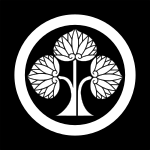
- Hitotsuyanagi clan (Nhất liễu thị) – cadet branch of Kōno clan who descended from Prince Iyo, son ofEmperor Kanmu.
- Hōjō clan(Bắc điều thị) – descended from Kanmu Heishi (disputed); no direct relation to theLater Hōjō clan(Bắc điều thị) or Kitajō clan (Bắc điều thị); regents of theKamakura shogunate.
- Later Hōjō clan(Hậu bắc điều thị) – also known as Hōjō clan or Go-Hōjō clan; descended from Kanmu Heishi; no direct relation to the regentHōjō clan(Bắc điều thị) or Kitajō clan (Bắc điều thị).

Mon of theHosokawa clan - Honma clan(Bổn gian thị) – also known as Homma clan or Honma clan ofSado;cadet branch of Yokoyama clan who descended fromOno no Takamura(disputed).
- Honma clan of Sakata (Tửu điền bổn gian thị) – cadet branch.
- Honda clan(Bổn đa thị) – descended fromFujiwara Hokke;famous forHonda Tadakatsu.
- Hosokawa clan(Tế xuyên thị) – cadet branch ofAshikaga clanwho descended fromSeiwa Genji.
- Hosokawa Keichō family (Tế xuyên kinh triệu gia) – head family.
- Hosokawa Tenkyū family (Tế xuyên điển cứu gia) – cadet branch.
- Hosokawa family of Awa (A ba tế xuyên thị) – cadet branch; descended from Hosokawa Akiharu.
- Hosokawa family of Ōshū (Áo châu tế xuyên gia) – cadet branch; descended fromHosokawa Akiuji.
- Hotta clan(Quật điền thị) descended fromEmperor Kōgenthrough the Ki clan.
- Ichijō family(Nhất điều gia) – descended fromFujiwara Hokke.
- Ichijō clan of Tosa (Thổ tá nhất điều thị) – cadet branch ofIchijō familywho descended fromFujiwara Hokke.
- Ide clan (Tỉnh xuất thị) – cadet branch ofNikaidō clanwho descended from Fujiwara Nanke.

- Ii clan(Tỉnh y thị) – descended fromFujiwara Hokke;famous forIi Naotora,Ii NaomasaandIi Naosuke.
- Ikeda clan (Trì điền thị) – descended fromSeiwa Genji;no direct relation to other clans called Ikeda.
- Ikeda clan of Iyo (Y dư trì điền thị) – no direct relation to other clans called Ikeda.
- Ikeda clan of Mino (Mỹ nùng trì điền thị) – no direct relation to other clans called Ikeda.
- Ikeda clan of Sasaki (Trì điền thị) – cadet branch ofSasaki clan;no direct relation to other clans called Ikeda.
- Ikeda clan of Settsu (Nhiếp tân trì điền thị) – descended from Ki clan (disputed). no direct relation to other clans called Ikeda.
- Imagawa clan(Kim xuyên thị) – cadet branch ofAshikaga clanwho descended fromSeiwa Genji;famous forImagawa Yoshimoto.
- Inaba clan– cadet branch of Kōno clan who descended from Prince Iyo, son ofEmperor Kanmu.

Mon of theInaba clan - Inoue clan(Tỉnh thượng thị) – descended fromSeiwa Genji.
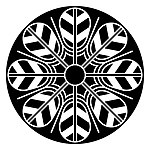
Mon of theInoue clan - Inoue clan of Shinano (Tín nùng tỉnh thượng thị) – head family.
- Inoue clan of Aki (An vân tỉnh thượng thị) – cadet branch.
- Inoue clan of Mikawa (Tam hà tỉnh thượng thị) – cadet branch.
- Ishida clan (Thạch điền thị) – cadet branch ofMiura clanwho descended from Kanmu Heishi (disputed). famous forIshida Mitsunari
- Ishikawa clan(Thạch xuyên thị) – also known as Ishikawa Genji; descended fromSeiwa Genji.
- Ishimaki clan (Thạch quyển thị) – descended fromNanke.
- Itō clan(Y đông thị) – cadet branch of Kudō clan who descended fromNanke.

- Kamiizumi clan(Thượng tuyền thị) – cadet branch ofFujiwara-descent Ashikaga clanwho descendedFujiwara Hokke.
- Kanamaru clan(Kim hoàn thị) – cadet branch ofTakeda clanwho descended fromSeiwa Genjiby way of Takeda Nobushige.
- Kagawa clan(Hương xuyên thị) – descended from Kanmu Heishi.
- Kikkawa clan(Cát xuyên thị) – cadet branch of Kudō clan who descended from Fujiwara Nanke. After the mid 16th century they are a cadet branch of theMōri clanwho descended from the Ōe clan, famous forKikkawa Motoharu.
- Kikuchi clan(Cúc trì thị) – descended from theFujiwara clan.
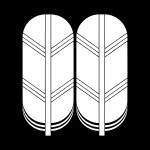
Mon of theKikuchi clan - Kira clan(Cát lương thị) – cadet branch ofAshikaga clanwho descended fromSeiwa Genji;famous forKira Yoshinaka.
- Kiso clan (Mộc tằng thị) – descended fromSeiwa Genji;famous forMinamoto no Yoshinaka.
- Kitabatake clan(Bắc điền thị) – descended fromMurakami Genji.
- Kitajō clan (Bắc điều thị) – also known as Kitajō clan ofEchigoor Mōri Kitajō clan; cadet branch ofMōri clan;no direct relation to theHōjō clan(Bắc điều thị) orLate Hōjō clan(Bắc điều thị).
- Kiyowara clan(Thanh nguyên thị) – descended fromPrince Toneri,son of theEmperor Tenmu(631–686).
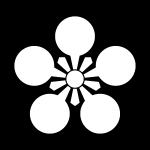
- Kobayakawa clan(Tiểu tảo xuyên thị) – cadet branch of Doi clan who descended from Kanmu Heishi. After the mid 16th century they are a cadet branch of theMōri clanwho descended from the Ōe clan, famous forKobayakawa TakakageandKobayakawa Hideaki.
- Kodama clan (Nhi ngọc thị) – descended fromFujiwara Hokke.

- Koga family(Cửu ngã gia) – descended fromMurakami Genji.
- Kōno clan (Hà dã thị) – descended from Prince Iyo son ofEmperor Kanmu.
- Konoe family(Cận vệ gia) – descended fromFujiwara Hokke.famous forKonoe Fumimaro.
- Kudō clan (Công đằng thị) – descended fromFujiwara Nanke.
- Kujō family(Cửu điều gia) – descended fromFujiwara Hokke.
- Kuzuyama clan (Cát sơn thị) – cadet branch of Ozutsuki clan; famous for medical knowledge.
- Kyōgoku clan(Kinh cực thị) – cadet branch ofSasaki clanwho descended fromUda Genji.
- Maeda clan(Tiền điền thị) – descended fromSugawara clan;famous forMaeda Toshiie.
- Makino clan(Mục dã thị) – descended fromMinamoto clan;claimed descent from the legendaryTakenouchi no Sukune.
- Manabe clan (Gian bộ thị) – descended fromFujiwara Hokke.
- Matsuda clan(Tùng điền thị) – cadet branch of Hatano clan who descended fromFujiwara Hokke.
- Matsudaira clan(Tùng bình thị) – cadet branch ofNitta clan,by theTokugawa clandescended fromSeiwa Genji(disputed); famous forTokugawa Ieyasu.
- Matsumae clan– cadet branch ofTakeda clanwho descended fromSeiwa Genji.

- Matsunaga clan(Tùng vĩnh thị) – descended fromFujiwara clanand retainers for theMiyoshi clan.Famous forMatsunaga Danjo Hisahide.

Mon of theMatsunaga clan - Matsuura clan(Tùng phổ thị) – cadet branch ofWatanabe clanwho descended from Saga Genji.
- Miura clan(Tam phổ thị) – descended from Kanmu Heishi.
- Mikumo clan (Tam vân thị) – cadet branch of Kodama clan who descended fromFujiwara Hokke.
- Miyahara clan (Cung nguyên thị) – descended from Ashikaga Motouji (Seiwa Genji).
- Miyoshi clan (Ogasawara)(Tam hảo thị) – cadet branch ofTakeda clan,by theOgasawara clanwho descended fromSeiwa Genji,famous forMiyoshi Nagayoshi;no direct relation to the Fujiwara-descent Miyoshi clan (Tam cát thị).

Mon of theMiyoshi clan - Miyoshi clan (Tam cát thị) – descended fromFujiwara clan;no direct relation to the Ogasahara-descent Miyoshi clan (Tam hảo thị).
- Mizuryū clan ( thủy long thị ) – descended fromSeiwa Genji.
- Mogami clan(Tối thượng thị) – cadet branch by theShiba clanof theAshikaga clanwho descended fromSeiwa Genji.

Mon of theMōri clan - Mori clan(Sâm thị) – descended fromSeiwa Genji;famous forMori Ranmaru.
- Mōri clan(Mao lợi thị) – descended from Ōe clan; no direct relation to the Genji-descent Mōri clan (Mao lợi thị) or Fujiwara-descent Mōri clan (Mao lợi thị); famous forMōri Motonariand his sons.
- Mōri clan of Inaba (Nhân phiên mao lợi thị) – cadet branch.
- Mōri clan (Mao lợi thị) – descended fromUda Genji;no direct relation toŌe-descent Mōri clan(Mao lợi thị) or Fujiwara-descent Mōri clan (Mao lợi thị);
- Mōri clan (Mao lợi thị) – descended fromFujiwara clan(disputed); no direct relation toŌe-descent Mōri clan(Mao lợi thị) or Genji-descent Mōri clan (Mao lợi thị);
- Murakami clan (Thôn thượng thị) – descended fromSeiwa Genji.
- Murakami clan of Inland Sea (Thôn thượng thủy quân) – also known as Murakami Suigun; famous for their naval forces.
- Murakami clan of Innoshima (Nhân đảo thôn thượng thị)
- Murakami clan of Kurushima (Lai đảo thôn thượng thị)
- Murakami clan of Nōnoshima (Năng đảo thôn thượng thị)
- Murakami clan of Shinano (Tín nùng thôn thượng thị) – also known as Shinshū Murakami clan; famous forMurakami Yoshikiyo.
- Murakami clan of Inland Sea (Thôn thượng thủy quân) – also known as Murakami Suigun; famous for their naval forces.
- Nagao clan(Trường vĩ thị) – descended from Kanmu Heishi; famous forUesugi Kenshin.
- Nabeshima clan(Oa đảo thị) – cadet branch ofShōni clanwho descended fromFujiwara Hokke.
- Nakayama family(Trung sơn gia) - descended fromNakayama Tadachika,third son of Fujiwara no Tadamune of theFujiwara Hokke.Known forNakayama Tadayasuand his daughterNakayama Yoshiko,mother of the Emperor Meiji.
- Niiro clan (Tân nạp thị) – cadet branch ofShimazu clanof theSatsuma Domainwho descended fromSeiwa Genji.
- Nakamura clan (Trung thôn thị)
- Nanbu clan(Nam bộ thị) – cadet branch ofTakeda clanwho descended fromSeiwa Genji.
- Nijō family(Nhị điều gia) – descended fromFujiwara Hokke.
- Nitta clan(Tân điền thị) – descended fromSeiwa Genji;famous forNitta Yoshisada.
- Niwa clan(Đan vũ thị) – cadet branch of Kodama clan who descended fromFujiwara Hokke(disputed); no direct relation to the Isshiki-descent Niwa clan (Đan vũ thị).
- Niwa clan (Đan vũ thị) – cadet branch ofIsshiki clanwho descended fromSeiwa Genji;no direct relation to the Kodama-descent Niwa clan (Đan vũ thị).

Mon of theOda clan - Oda clan(Chức điền thị) – descended from Kanmu Heishi; famous forOda Nobunaga.
- Ôishi clan of Ako (Đại thạch thị) – descended from theFujiwara clan.The name Oishi comes from 'Oishi no sho' in Omi province. Famous forŌishi Yoshio.
- Ôishi clan of Shinano (Đại thạch thị) – descended from theFujiwara clanthrough the Numata clan. The name Oishi comes from 'Oishi go', in Shinano province.
- Ôishi clan of Musashi (Đại thạch thị) – descended from the Kiso clan (Seiwa Genji).
- Ōkōchi clan (Đại hà nội thị) – descended fromSeiwa Genji.
- Ōta clan– descended fromSeiwa Genji;famous forŌta Dōkan.
- Ogasawara clan(Tiểu lạp nguyên thị) – cadet branch ofTakeda clandescended fromSeiwa Genji.

Mon of theOgasawara clan - Ōtomo clan(Đại hữu thị) – descended fromFujiwara Hokke;no direct relation to the ancient Ōtomo clan (Đại hữu thị) or Ōtomo clan (Đại bạn thị); famous forŌtomo Sōrin.
- Ōuchi clan(Đại nội thị) – descended from Tatara clan and claim to descend from the royal house ofBaekje.
- Rokkaku clan(Lục giác thị) – cadet branch ofSasaki clanwho descended fromUda Genji.
- Sagara clan(Tương lương thị) – descended from Fujiwara Nanke.
- Saitō clan(斉 đằng thị) – descended fromFujiwara Hokke;famous forSaitō Dōsan.
- Sakai clan(Tửu tỉnh thị) – cadet branch ofNitta clan,by theTokugawa clandescended fromSeiwa Genji.
- Sakuma clan (Tá cửu gian thị) – cadet branch ofMiura clanwho descended from Kanmu Heishi.
- Sanada clan(Chân điền thị) – descended fromSeiwa Genji(disputed); famous forSanada Nobushigewho is more commonly known asSanada Yukimura.
- Sanjō family (Tam điều gia) – descended fromFujiwara Hokke;famous forSanjō Sanetomi.
- Sasaki clan(Tá 々 mộc thị) – descended fromUda Genji.
- Satake clan(Tá trúc thị) – descended fromSeiwa Genji.
- Satomi clan(Lí kiến thị) – descended fromSeiwa Genji.
- Shiba clan(Tư ba thị) – cadet branch ofAshikaga clanwho descended fromSeiwa Genji.
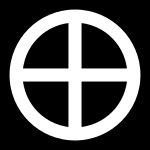
Mon of theShimazu clan - Shimizu clan of Mino (Thanh thủy thị) – descended fromMinamoto no Yorimitsuof theSeiwa Genji.
- Shimizu clan of Bicchu (Thanh thủy thị) – descended from theTaira clan.
- Shimizu clan of Izu (Thanh thủy thị) – descended from theFujiwara clan.
- Shimizu clan of Dewa (Thanh thủy thị) – cadet branch of theMogami clanand through theShiba clanfrom theAshikaga clan(Seiwa Genji).
- Shimazu clan(Đảo tân thị) – also known asSatsuma Clan;descended fromSeiwa Genji.
- Shinmen clan(Tân miễn thị) – also known as Shimmen clan; cadet branch ofAkamatsu clanwho descended fromMurakami Genji.
- Shōni clan(Thiếu 弐 thị) – descended fromFujiwara Hokke.
- Sō clan(Tông thị) – descended from Koremune clan.
- Sogō clan (Thập hà thị) – descended fromEmperor Keikō.

Mon of theSuwa clan - Sōma clan(Tương mã thị) – cadet branch ofChiba clanwho descended from Kanmu Heishi.
- Sōma clan of Ōshū (Áo châu tương mã thị) – head family.
- Sōma clan of Shimōsa (Hạ tổng tương mã thị) – cadet branch.
- Suda clan (ja: Tu điền) – famous for being a clan ofsamurai,andmartial artpractitioners. While the northeastern and west-central family branches state that they are descended from the Minamoto clan through the Inoue family, the family branch in Okinawa has the legend that they are descendants of theJapanese dragon(Nihon ryū).
- Sue clan (Đào thị) – cadet branch ofŌuchi clanwho descended from Tatara clan. famous forSue Harukata.
- Sugi clan (Sam thị) – cadet branch ofSasaki clanwho descended fromUda Genji;famous forYoshida Shōin.
- Suwa clan(Tưu phóng thị) – more or less unknown ancestors, many believed Suwa descended fromSeiwa Genjithrough Minamoto no Tsunetomo.
- Tachibana clan(Lập hoa thị) – cadet branch of Ōtomo clan, descended fromŌtomo Yoshinao;no direct relation to the ancientTachibana clan(Quất thị); famous forTachibana Ginchiyoand her husbandTachibana Muneshige.

- Takanashi clan(Cao lê thị) – cadet branch ofInoue clanwho descended fromSeiwa Genji(disputed).
- Takaoka clan(Cao cương thị) – descended fromUda GenjiorSeiwa Genji.
- Takatsuji family (Cao thập gia) – descended fromSugawara clan.
- Takatsukasa family(Ưng tư gia) – descended fromFujiwara Hokke.
- Takeda clan(Võ điền thị) – also known as Takeda clan ofKai;descended fromSeiwa Genji;famous forTakeda Shingen.
- Takeda clan of Aki(An vân võ điền thị) – cadet branch.
- Takeda clan of Kazusa (Thượng tổng võ điền thị) – cadet branch.
- Takeda clan of Wakasa (Nhược hiệp võ điền thị) – cadet branch.

- Takenaka clan(Trúc trung thị) – cadet branch ofToki clanwho descended fromSeiwa Genji.
- Takigawa clan (Lung xuyên thị) – descended from Ki clan or Tomo clan (disputed).
- Tanegashima clan(Chủng tử đảo thị) – descended from Kanmu Heishi (disputed); famous for production of earlyfirearms.
- To clan (Đông thị) – cadet branch of theChiba clanwho descend from theTaira clan.
- Toda clan (Hộ điền thị) – descended fromFujiwara Hokke.
- Tōdō clan(Đằng đường thị) – clan of humble origins founded byTōdō Takatora,who was a highly trusted commander underToyotomi HideyoshiandTokugawa Ieyasu.
- Toki clan(Thổ kỳ thị) – descended from the Settsu Genji, branch ofSeiwa Genji.
- Tokugawa clan(Đức xuyên thị) – descended fromTokugawa IeyasufromMatsudaira clan;famous forTokugawa shogunate.

Mon of theTokugawa clan - Tokugawa Shōgun family (Đức xuyên tương quân gia) – head family.
- Tokugawa family of Kōfu (Giáp phủ đức xuyên gia) – descended fromTokugawa Tsunashige,3rd son ofTokugawa Iemitsu.
- Tokugawa family of Tatebayashi (Quán lâm đức xuyên gia) – descended fromTokugawa Tsunayoshi.
- Tokugawa Yoshinobu family(Đức xuyên khánh hỉ gia) – descended fromTokugawa Yoshinobu.
- Gosanke(Ngự tam gia)
- Tokugawa family of Kishū (Kỷ châu đức xuyên gia) – also known as Kii Tokugawa family; descended fromTokugawa Yorinobu,10th son ofTokugawa Ieyasu;famous forTokugawa YoshimuneandTokugawa Iemochi.
- Tokugawa family of Mito(Thủy hộ đức xuyên gia) – descended fromTokugawa Yorifusa,11th son ofTokugawa Ieyasu;famous forTokugawa Mitsukuni.
- Tokugawa family of Matsudo (Tùng hộ đức xuyên gia) – cadet branch ofTokugawa family of Mito.
- Tokugawa family of Owari(Vĩ trương đức xuyên gia) – descended fromTokugawa Yoshinao,9th son ofTokugawa Ieyasu.
- Gosankyō(Ngự tam khanh)
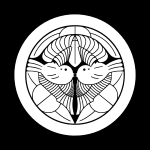
Mon of theUesugi clan - Tokugawa family of Hitotsubashi (Nhất kiều đức xuyên gia) – descended fromTokugawa Munetada,4th son ofTokugawa Yoshimune.
- Tokugawa family of Shimizu(Thanh thủy đức xuyên gia) – descended fromTokugawa Shigeyoshi,2nd son ofTokugawa Ieshige.
- Tokugawa family of Tayasu (Điền an đức xuyên gia) – descended fromTokugawa Munetake,2nd son ofTokugawa Yoshimune.
- Tokugawa Shōgun family (Đức xuyên tương quân gia) – head family.
- Tomuro clan (Hộ thất thị) – descended fromFujiwara Hokke.
- Torii clan(Điểu tỉnh thị) – descended from Taira no Yukinori.
- Toyotomi clan(Phong thần thị) – given toToyotomi Hideyoshiand his family.
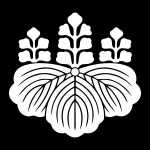
Monof theToyotomi clan.It is also used by the Japanese government. - Tsugaru clan(Tân khinh thị) – also known as Ōura clan; descended fromFujiwara Hokke.
- Tsuru clan ( Miyako-Todomaru) – descended from Takeda Kai clan.Guardians ofKyoto(Miyako) the Capital city.
- Tsutsui clan(Đồng tỉnh thị) – descended fromFujiwara clan;famous forTsutsui Junkei.
- Uesugi clan(Thượng sam thị) – descended fromFujiwara Hokke.
- Uesugi family of Inukake (Khuyển huyền thượng sam gia) – descended from Uesugi Norifuji.
- Uesugi family of Ōgigayatsu (Phiến cốc thượng sam gia) – descended from Uesugi Shigeaki.
- Uesugi family of Takuma (Trạch gian thượng sam gia) – descended from Uesugi Shigeyoshi.
- Uesugi family of Yamanouchi (Sơn nội thượng sam gia) – descended from Uesugi Noriaki; famous forUesugi Kenshin.
- Uesugi family of Fukaya (Thâm cốc thượng sam gia) – also known as Kobanawa Uesugi family; descended from Uesugi Norifusa.
- Ukita clan(Vũ hỉ đa thị) – descended from Kojima Takanori ofSeiwa Genji;famous forUkita Hideie.
- Urakami clan (Phổ thượng thị) – descended fromEmperor Kōgenby the Ki clan.

- Utsunomiya clan (Vũ đô cung thị) – descended fromFujiwara Hokke.
- Utsunomiya clan of Shimotsuke (Hạ dã vũ đô cung thị) – head family.
- Utsunomiya clan of Buzen (Phong tiền vũ đô cung thị) – cadet branch.
- Utsunomiya clan of Chikugo (Trúc hậu vũ đô cung thị) – cadet branch.
- Utsunomiya clan of Iyo (Y dư vũ đô cung thị) – cadet branch.
- Wakiya clan (Hiếp ốc thị) – cadet branch ofNitta clanwho descended fromSeiwa Genji.
- Watanabe clan(Độ biên) – descended from the Saga Genji.
- Yagyū clan(Liễu sinh thị) – descended fromSugawara clan;famous for their swordsmanship calledYagyū Shinkage-ryū.
- Yamana clan(Sơn danh thị) – cadet branch ofNitta clanwho descended fromSeiwa Genji.
- Yamanouchi clan(Sơn nội thị) – also known as Yamanouchi Sudō clan, descended fromFujiwara Hokke.
- Yamanouchi clan of Bingo (Bị hậu sơn nội thị) – head family.
- Yamanouchi clan of Ōshū (Áo châu sơn nội thị) – cadet branch.
- Yamanouchi clan of Tosa (Thổ tá sơn nội thị) – cadet branch; famous forYamauchi Kazutoyo.
- Yanagisawa clan– cadet branch ofTakeda clanwho descended fromSeiwa Genji.

Mon of the Yanagizawa clan - Yonekura clan– cadet branch ofTakeda clanwho descended fromSeiwa Genji.
- Yūki clan(Kết thành thị) – descended fromFujiwara Hokke.

Mon of theYūki clan - Yūki clan of Shimousa (Hạ tổng kết thành thị) – head family.
- Yūki clan of Shirakawa (Bạch hà kết thành thị) – cadet branch.
Zaibatsu
[edit]Zaibatsuwere the industrial and financialvertically integratedbusinessconglomeratesin theEmpire of Japan,whose influence and size allowed control over significant parts of theJapanese economyfrom the Meiji period until the end ofWorld War II.
- Iwasaki family (Nham kỳ gia) – founder ofMitsubishi;descended fromTakeda clanfromSeiwa Genji
- Mitsui family(Tam tỉnh gia) – founder ofMitsui;descended fromFujiwara Hokke.However,Mitsui Takatoshi's great-great-grandfather's father was originally from theRokkaku clanand had married into the earlyMitsui family.
- Sumitomo family (Trụ hữu gia) – founder ofSumitomo;descended from Kanmu Heishi
Sacerdotal clans
[edit]- Abe clan
- Kamo clan[1]
- Nakatomi clan[2]
- Urabe clan[3]
Ryukyu
[edit]Ryukyuan peopleare notYamato people,but theRyukyu Islandshave been part of Japan since 1879.

Ryukyuan dynasties:
- Tenson Dynasty(Thiên tôn vương triều) – legendary dynasty (ended 12th century)
- Shunten Dynasty(Thuấn thiên vương thống) – first dynasty of Ryukyu (1187–1259)
- Eiso Dynasty(Anh tổ vương thống) – second dynasty of Ryukyu (1260–1354)
- Haniji Dynasty (Phạ ni chi vương thống) – kings ofHokuzan(1314–1416)
- Ōzato Dynasty(Đại lí vương thống) – kings ofNanzan(1314–1429)
- Satto Dynasty (Sát độ vương thống) – kings ofChūzan(1355–1407)
- First Shō Dynasty(Đệ nhất thượng thị) – kings of theRyukyu Kingdom(1407–1469)
- Minshi Kameya family (Minh thị quy cốc gia) – descended fromShō Toku,last king of the First Shō Dynasty.
- Second Shō Dynasty(Đệ nhị thượng thị) – kings of theRyukyu Kingdom(1469–1879)
Toraijin ( độ lai nhân )
[edit]Toraijin is used to describe migrants in many contexts, from the original migration of a Yamato peoples to more recent migrants. According to the bookShinsen Shōjirokucompiled in 815, a total 326 out of 1,182 families in theKinaiarea on Honshū were regarded as people with foreign genealogy. The book specifically mentions mentions 163 were from China, such families fromBaekje,41 fromGoguryeo,9 fromSilla,and 9 fromGaya.These families are considered notable, although not inherently noble.[4][5]
Baekje
[edit]- Asukabe clan (Phi điểu bộ thị) – descended fromBuyeo Gonji,younger brother of KingMunju of Baekjeand son of KingGaero of Baekje.
- Fuha clan (Bất phá thị)
- Funa clan (Thuyền thị) –

Crown of Baekjefound in theTomb of King Muryeong - Hirota clan (Quảng điền thị)
- Ka clan (Giả thị)
- Kaguyama clan (Hương sơn thị)
- Kazurai clan (Cát tỉnh thị)
- Kinunui clan (Y phùng thị)
- Kudara no Konikishi clan(Bách tế vương thị) – descended fromZenkō( thiện quang or thiền quảng ), son of the last king of Baekje,King Uija.

Kudara shrine of theKudara no Konikishi clan - Mimatsu clan (Tam tùng thị) – cadet branch of Kudara no Konikishi clan.
- Miyake clan(Tam trạch thị) – cadet branch of Kudara no Konikishi clan.
- Ōuchi clan(Đại nội thị) – descended fromPrince Imseong,third son of KingSeong of Baekje.

Mon ofŌuchi clan - Sue clan (Đào thị) – cadet branch of Ōuchi clan.
- Washizu clan (Thứu đầu thị) – cadet branch of Ōuchi clan.
- Yamaguchi clan (Sơn khẩu thị) – cadet branch of Ōuchi clan.
- Sakata clan (Bản điền thị)
- Sugano clan (Gian dã thị)
- Tsu clan (Tân thị)
- Kawachinofumi clan(Tây văn thị) – descended from the scholarWani.
- Yamato no Fuhito clan(Hòa sử thị) – descended fromPrince Junda,son of KingMuryeong of Baekje.
- Takano clan (Cao dã thị) – cadet branch of Yamato clan, famous forTakano no Niigasa.
- Yamatonoaya clan(Đông hán thị) – descended fromAchi no omi.
- Akizuki clan(Thu nguyệt thị) – cadet branch of Yamatonoaya clan.
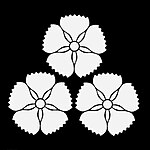
Mon ofAkizuki clan - Haruda clan (Nguyên điền thị) – cadet branch of Yamatonoaya clan.
- Inoue clan(Tỉnh thượng thị) – there is a branch of Yamatonoaya clan with the name Inoue; they are different from the Seiwa GenjiInoue clan.
- Kawachi no Aya clan (Tây hán thị) – cadet branch of Yamatonoaya clan.
- Ōkura clan (Đại tàng thị) – cadet branch of Yamatonoaya clan.
- Sakanoue clan (Bản thượng thị) – cadet branch of Yamatonoaya clan.
- Tamura clan(Điền thôn thị) – cadet branch of Yamatonoaya clan.
- Yamato no Fumi clan (Đông văn thị) – not a branch of the Yamatonoaya clan.
- Akizuki clan(Thu nguyệt thị) – cadet branch of Yamatonoaya clan.
Goguryeo
[edit]- Kifumi clan (Hoàng văn thị) – descended from KingYeongnyu of Goguryeo.
- Koma clan(Cao lệ thị) – descended from Jakkō, son of the last ofGoguryeo,KingBojang of Goguryeo.
- Kuwabara clan (Tang nguyên thị)
- Sena clan (Bối nại thị) – descended from Sena no Fukutoku ( bối nại phúc đức ), son of KingYeongnyu of Goguryeo.
- Toyohara clan (Phong nguyên thị)
- Yasaka clan (Bát bản thị)
- Yahamara clan (Bát bản thị phong nguyên thị)
Silla
[edit]- Hata clan(Tần thị) – claims to be descended fromYuzuki no Kimi.The clan claimed descent fromQin Shi Huang,but recent Japanese research points this to be aggrandization and their true origin to be from Silla.
- Chōshi clan (Điều tử thị) – cadet branch of Hata clan.
- Chōsokabe clan(Trường tông ngã bộ thị) – descended fromHata clan(disputed); famous forChōsokabe Motochika.
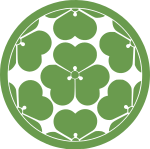
Mon ofChōsokabe clan - Fujiki clan (Đằng mộc thị) – cadet branch of Hata clan.
- Hakura clan (Vũ thương thị) – cadet branch of Hata clan.
- Hirata clan (Bình điền thị) – cadet branch of Hata clan.
- Kada clan (Hà điền thị) – cadet branch of Hata clan.
- Kawakatsu clan(Xuyên thắng thị) – cadet branch of Hata clan, named afterHata no Kawakatsu.

Mon ofKawakatsu clan - Matsumuro clan (Tùng thất thị) – cadet branch of Hata clan.
- Matsuo clan (Tùng vĩ thị) – cadet branch of Hata clan.
- Matsushita clan (Tùng hạ thị) – cadet branch of Hata clan.
- Mikami clan (Tam thượng thị) – cadet branch of Hata clan.
- Minami clan (Nam thị) – cadet branch of Hata clan.
- Mokusei clan ( mộc tinh ) – cadet branch of the Hata Clan.
- Nishiōji clan (Tây đại lộ thị) – cadet branch of Hata clan.
- Obata clan (Tiểu điền thị) – cadet branch of Hata clan.
- Ōkura clan (Đại tàng thị) – cadet branch of Hata clan.
- Ōnishi clan (Đại tây thị) – cadet branch of Hata clan.
- Seo clan (Lại vĩ thị) – cadet branch of Hata clan.
- Tōgi clan (Đông nghi thị) – cadet branch of Hata clan.
- Tsuchiyama clan (Thổ sơn thị) – cadet branch of Hata clan.
- Koremune clan (Duy tông thị) – lateral branch of theHata clan.
- Fushimaru clan (Phục hoàn thị)
- Hine clan (Nhật căn thị)
- Itoi clan (Mịch tỉnh thị) – descended fromAmenohiboko,a prince ofSillawho came to Japan in the 3rd or 4th century.
- Maki clan (Chân thành thị)
- Tachibanamori clan (Quất thủ thị) – descended fromAmenohiboko,a prince ofSillawho came to Japan in the 3rd or 4th century.
- Tajima clan (Đãn mã thị) – descended fromAmenohiboko,a prince ofSillawho came to Japan in the 3rd or 4th century.
- Unabara clan (Hải nguyên thị)
Gaya
[edit]- Arara clan (Hoang hoang thị)
- Hirata clan (Tích điền thị) – descended from Tsunugaarashito ( đô nộ ngã a la tư đẳng ), a prince ofGaya.
- Karabito clan (Hàn nhân thị)
- Michita clan (Đạo điền thị)
- Ōchi clan (Đại thị thị) – descended from Tsunugaarashito ( đô nộ ngã a la tư đẳng ), a prince ofGaya.
- Tatara clan (Đa đa lương thị) – descended from Tsunugaarashito ( đô nộ ngã a la tư đẳng ), a prince ofGaya.
- Toyotsu clan (Phong tân thị)
China
[edit]- Ōtomo clan (Đại hữu thị) – descended from Tei ( xưng ), a descendant ofEmperor Xian of Han;no direct relation to the native Ōtomo clan (Đại bạn thị) or feudal Ōtomo clan (Đại hữu thị).
- Takamuko clan (Cao hướng thị) – descended fromEmperor Wenof the ChineseCao Weidynasty; famous forTakamuko no Kuromaro.
See also
[edit]Notes
[edit]- ^Nelson, John K. (2000).Enduring Identities: The Guise of Shinto in Contemporary Japan,pp. 67–69.
- ^Cranston, Edwin A. (1998).A Waka Anthology,p. 513.
- ^Grapard, Allan G. (1992).The protocol of the gods,p. 42.
- ^Saeki, Arikiyo (1981).Shinsen Shōjirokuno Kenkyū (Honbun hen)(in Japanese). Yoshikawa Kōbunkan.ISBN4-642-02109-4.
- ^"Độ lai nhân と xích tuệ".The KANSAI Guide - The Origin of Japan, KANSAI(in Japanese).Retrieved2022-09-14.
References
[edit]- Newell, William Hare. (1976).Ancestors.,Walter de Gruyter.ISBN978-90-279-7859-2;OCLC2576802
